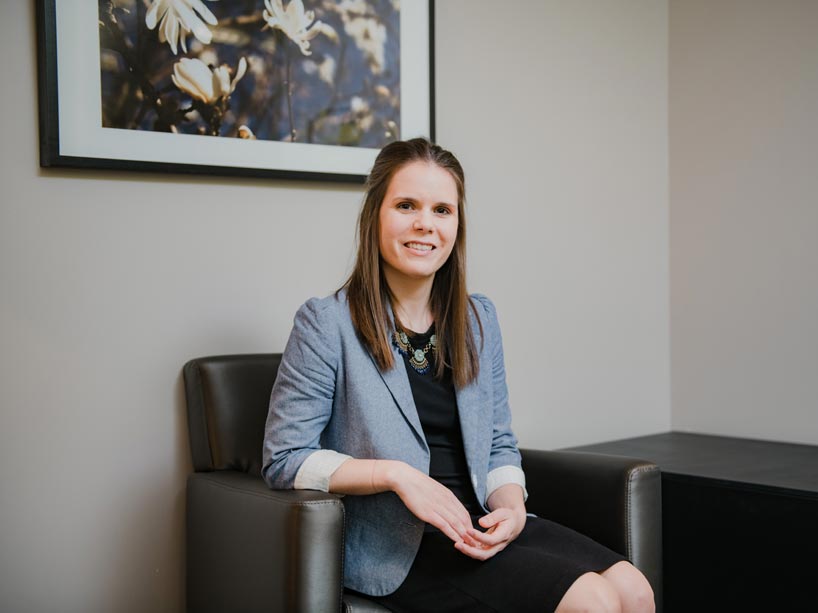Researching to better treat those with crippling claustrophobic fear

Ryerson PhD student Kirstyn Krause sits next to a claustrophobia chamber used as part of her Ryerson research study. Photo credit: Alyssa Katherine Faoro.
Kirstyn Krause knows her research has the power to change lives. The clinical psychology PhD student is conducting research into claustrophobia as part of her dissertation, and has completed in-depth interviews with more than 70 people suffering from the anxiety disorder. Her work, supervised by professor Martin Antony in the Anxiety Research and Treatment Laboratory (external link) , examines the most effective strategies for reducing fear associated with claustrophobia.
Claustrophobia is characterized by a strong and persistent fear of small spaces or enclosed situations. Claustrophobic fear usually leads to avoidance of such spaces, and can interfere with one’s ability to function in work, social, or home life. Over 12 per cent of the U.S. population suffers from this and other specific phobias, and researchers feel the percentage of affected Canadians is likely similar.
People are impacted to varying degrees by claustrophobia, but some people’s quality of life is highly diminished, leaving sufferers unable to ride in elevators, venture into dark movie theatres or to enter a crowded subway train, for example. Krause’s research examines which combination of the two main claustrophobia interventions—cognitive therapy and exposure therapy—will be the most effective.
Guiding participants through cognitive and exposure therapy sessions
“We have decades of research to show that exposure therapy is one of the most effective ways of treating anxiety disorders such as claustrophobia,” she said. “Although we know that exposure is effective, mental health professionals and researchers alike need more information about how and why exposure works, as this information can help us know how to best administer that treatment.
“In the claustrophobia study, I am examining whether incorporating cognitive therapy in different ways has an impact on the overall effectiveness of exposure for participants. Knowing more about how and why exposure works can help us to optimize exposure, making it more effective and applicable for people struggling with debilitating anxiety.”
As part of her research, Krause guides participants through cognitive and exposure therapy sessions and measures their levels of fear before and after each.
Cognitive therapy involves exploring participants’ feared beliefs by identifying unhelpful or inaccurate thinking.
Exposure therapy involves facing the fear in a safe, controlled environment. In this case, participants face their fear of enclosed spaces by entering a claustrophobia chamber, a long narrow enclosed wooden box which lies on the ground and opens from the top. Participants control the intensity of the sessions by choosing the most challenging exposure trial they are willing to experience.
For example, participants can lie in the chamber with the door open or closed. To make the session more intense, the door can be latched shut and a number of implements (like handcuffs or a scarf) can be used to further restrain the person inside. One month after their session with Krause, participants return to provide feedback on their symptoms and fear levels following treatment.
Participants have offered many anecdotes on how their participation in the study has improved their quality of life. Many leave the study having learned more about cognitive and exposure therapy, and desire to seek more of this kind of treatment. “People often report being surprised by how far they were able to push themselves during exposure, said Krause.
“They describe less fear towards enclosed situations used in the study by the end of the interview, and a better understanding of their ability to cope with difficult emotions like anxiety. Sometimes participants also find that practicing exposure as part of the study has given them the courage to face their fear of enclosed spaces in the real world, such as taking the elevator more often, going to the movie theatre, or attending a crowded concert or parade.”
Once her interviews are completed, Krause will analyze the data, finalize her dissertation and then defend it in summer 2020. She hopes to have results published in an academic journal sometime the following year.